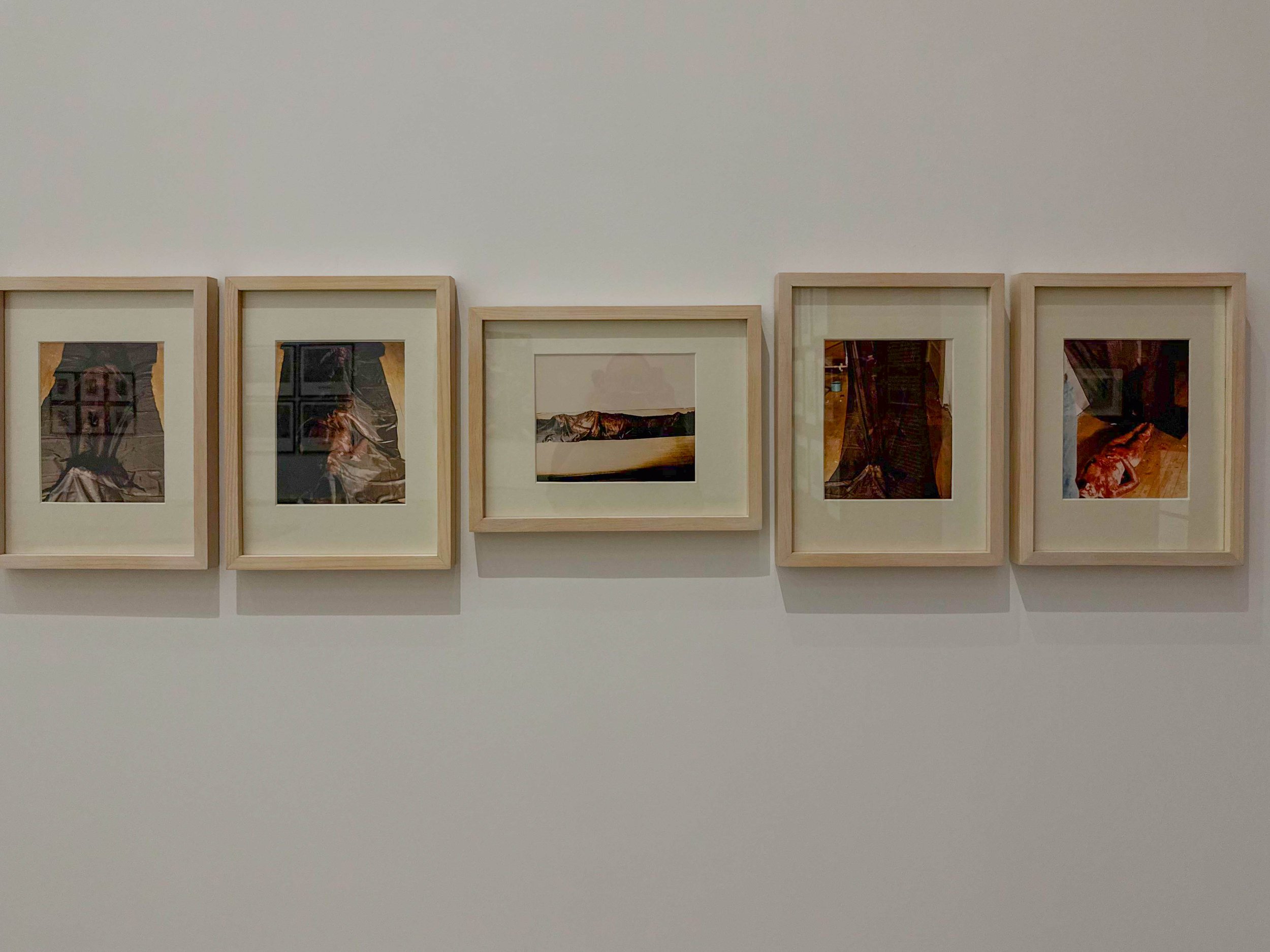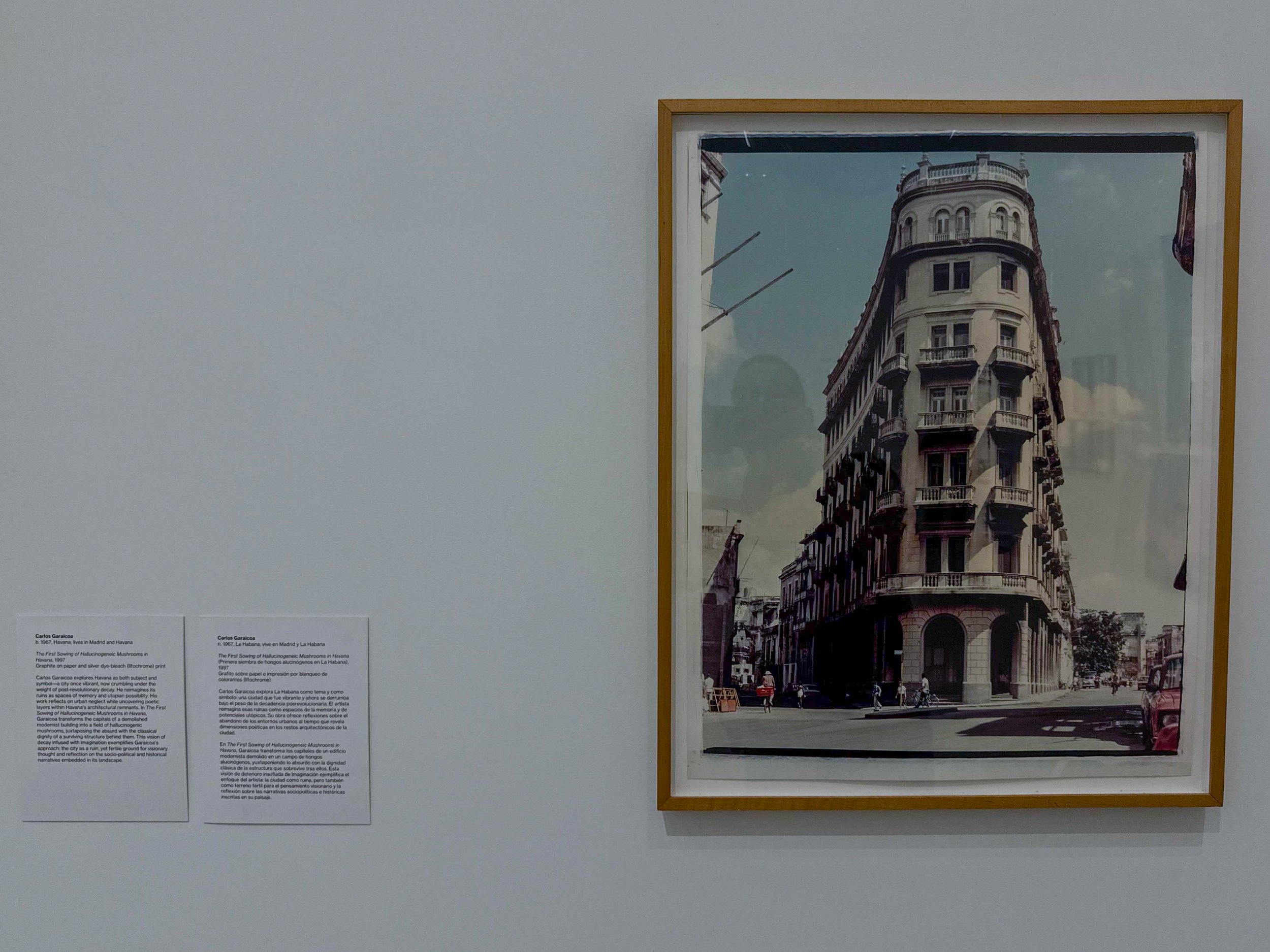Vocabulary and Visual Grammar: Photography, Language, and Image in the Jorge M. Pérez Collection (Spanish)
By Milagros González
July 4th, 2025
Documents arise from a need to capture facts accurately. For this reason, photographing an image that reflects reality can feel like a visceral impulse. Yet, an art piece invites a deeper understanding, one that transcends the surface of the image without necessarily seeking a definitive reflection of what is real. Along this path, crossroads emerge, and photography, as an artistic discipline, navigates them. The leap from document to art piece can be an acrobatic exercise, challenging both artist and viewer. The narrative may convey multiple meanings, but the language resides entirely within the image—captured on paper by the click of a camera—and in the visual vocabulary crafted by the artist.
In May 2025, the Pérez Art Museum Miami (PAMM) opened a photography exhibition, Language and Image, showcasing over 100 works by 50 international artists from the Jorge M. Pérez Collection. This exhibition of conceptual and performance-based photography offers a glimpse into photography’s ability to capture far more than the image, the view, or the surface. Across its various rooms, the exhibition explores themes of visual analysis, inviting visitors to engage with their emotions and listen to the discourse woven by the artworks.
Entrance to Exhibition. Photo: © Milagros González
The first step into the exhibition is a plunge into the unknown. Visitors are greeted by a large-format photograph by Thomas Struth, which dramatically shifts their perspective from observer to observed. This moment challenges the notion of photography as a mere tool for capturing reality, prompting questions: What is reality? What is truth? This section contrasts masters like Louis Faurer, André Kertész, and Arthur Leipzig with contemporary artists such as Candida Höfer, Vik Muniz, and Thomas Struth. The pioneers, who transitioned from photojournalism to art photography, reveal the intimacy of public moments—evident in Kertész’s spontaneous images of musicians in New York City or Leipzig’s photographs of mine workers’ weddings. Contemporary artists, meanwhile, turn the gaze onto the viewer, exploring architectural spaces and demonstrating how the artist’s eye can shape reality. This shift in perspective sets the tone for the next room.
Here, visitors move from observing the intimacy of others in public spaces to encountering the artist’s private world embodied in the work. The image is both represented and performed before the camera, elusive yet palpable through the physicality of the artist’s body and the illusion of truth captured in theatrical, performative gestures. At first glance, these photographs may seem to document a performance, but they do more. They extend an action across time and space, with the artist’s gesture striking the viewer like a memento mori, grounding them in the present with the force of a revelation. Artists such as Consuelo Castañeda, Liliana Porter, Marina Abramović, Tania Bruguera, María Teresa Hincapié, and Cindy Sherman feature in this section. While Abramović, Bruguera, and Hincapié star in their own performances, Castañeda’s A Story in Seventy Pages portrays her mother unposed, capturing signs of aging in snapshots that form a poignant visual inventory.
Installation View of one of the rooms of the exhibition. Photo: © Milagros González
Ana Mendieta’s Untitled (Body Print) serves as a bridge to the next room, which explores the use of image sequences (the grid) to convey concepts. This section presents images—fragments, sequences, repetitions—that compose an intimate narrative, akin to sequences of DNA. Works by Mike Kelley, Joseph Kosuth, and Oscar Muñoz, among others, create individual universes where the orthogonal structure of the grid acts as scaffolding for the artist’s storytelling.
The following room positions the photographer as a “character witness,” armed with the camera’s privileged point of view. The distance between subject and artist, as captured by the lens, reveals social dynamics within communities. Works like Jonathas de Andrade’s Eu, Mestiço or Thania Petersen’s Queen Colonialists and Her Weapons of Mass Destruction harness the power of the image to highlight social issues often overlooked.
The landscape, as both an object of fascination and a catalyst for visual narratives, takes center stage in the next segment, featuring works from the PAMM collection. Themes of resilience, harmony, imbalance, loneliness, death, and life emerge as if from a natural history book. Teresa Margolles records rural landscapes with obsessive precision, often featuring trees as a recurring motif. Yet, at the base of each tree, her work reveals a humble memorial for someone murdered on a perilous road in her native Mexico. Similarly, Isaac Julien’s Emerald City / Capital (Playtime) depicts an idyllic Dubai desert, with a woman on the left and a promising city on the right. But instead of hope, the image conveys the isolation of an immigrant domestic worker in a solitary, alienating context.
From natural landscapes, the exhibition shifts to the urban scene, suggesting that, through the camera’s lens, architecture becomes more than mere construction. These artworks portray buildings as containers of memory, witnesses to social, political, or moral decay. Carlos Garaicoa, for instance, depicts a ruined building in Havana as a decaying structure, a utopian vision visible only under the influence of hallucinogenic mushrooms. The exhibition concludes with photography as a tool for creating and constructing images imbued with meaning and memory.
This exhibition offers a profound exploration of the photographic image as a generator of language. The curators dissect each artist’s perspective with surgical precision, and visitors follow the narrative thread, learning a new visual vocabulary as they move through the space. They may grasp, memorize, or discard elements that resonate or fail to captivate. The artists’ discourse permeates the exhibition, and the language of the image offers endless possibilities, inviting visitors to read it and make it their own.
Artworks Photo Gallery (All photos © William Riera)
Consuelo Castañeda (Havana, Cuba, 1958) Lives in Miami. "Una historia de setenta páginas" (A Story of Seventy Pages), 1989. Gelatin Silver print. Edition 1/3.
Claudia Andujar (Neuchâtel, Switzerland, 1931). Lives in Sao Paulo, Brazil. "Sem título" from the series "A Sônia" (Untitled, from the series A Sônia), 1971.
Tania Bruguera (Havana, Cuba, 1968) Lives and works in Cambridge, Massachusetts, USA. "El peso de la culpa" ISin título #3) (The Burden of Guilt (Untitled #3)), 1998. Chromogenic print. Edition 3/5. "El peso del silencio" (The Body of Silence), 1998. Chromogenic print on mat board. Edition 3/5
Liliana Porter (buenos AIres, Argentina, 1941). Lives in New York. "Untitled (Geometric Shapes), 1973. Gelatin silver print.
Marta María Pérez Bravo (Havana, Cuba, 1959). Lives in Mexico City. Gelatin Silver prints. Edition of 15.
Oscar Muñoz (Popayán, Colombia, 1951). Lives in Cali, Colombia. "Proyecto para un Memorial IV (Project for a Memorial IV), 2005. Chromogenic prints face-mounted to plexiglass and flush-mounted on styrofoam in 9 parts.
Ana Medieta (b. Havana, Cuba, 1948, d. New York, USA, 1985) Untitled (Body Print) 1974/99. 5 Chromogenic Prints. Edition 6/10.
Carlos Garaicoa (Havana, Cuba, 1967). Lives in Madrid and Havana. ''The First Sowing of Hallucinogenic Mushrooms in Havana,." Graphite on paper; silver dye-bleach (Ilfochrome) print.
Milagros González is a Venezuelan museologist, historian, and cultural manager based in Miami, renowned for her contributions to art research and education. A 1999 graduate of Universidad José María Vargas in Museology and Art History, she served as a curator and researcher at the Museo de Bellas Artes and Galería Nacional de Arte in Caracas from 1998 to 2009, where she published De la Colección a la Nación, exploring the intellectual history of Caracas museums. Since relocating to Miami in 2009, González has been a pivotal figure at the Arts Connection Foundation, managing innovative cultural events like the Miami New Media Festival. As Research Coordinator for IAM Venezuela, she advocates for the digital preservation of Venezuelan cultural heritage. A dedicated art educator, González currently teaches at Robert Morgan Educational Center and Senior High in Miami and has shared her expertise globally, including at the 2010 Crossroads Congress in Mexico, fostering dialogue on art, history, and cultural identity.









